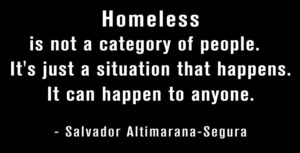Thank You for Bringing HOPE

Thank you for your support throughout the year and for the holidays.
I’m hoping that you can continue to include your “feeding the hungry” activities throughout the coming year! Your donations translate into hot meals, safe shelter, and a reminder to the hungry and unhoused that there are those out there who care.
Your generosity changes lives. Food pantries, soup kitchens, and shelters restore people’s lives.
It takes all of us to support those in need.
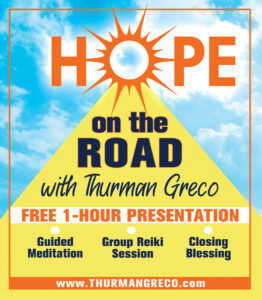

Do you have a crowded closet? Winter clothing needs include:
warm coats
foot wear – especially boots
warm gloves and hats
jeans and pants
sweatpants
long underwear
The items most often resquested: socks
– – – – – – – – –
Thanks for reading this blog post. Please share it on your preferred social media network. Forward it to your friends and relatives.
Find more information about hunger and homelessness on “Let’s Live with Thurman Greco” on YOUTUBE.
www.thurmangreco.com
www.hungerisnotadisease.com
THANK YOU FOR CARING!

Do you want to learn more about hunger and homelessness in America? You can find more info in previous posts on this blog.
5 Easy Steps to Your Successful Food Drive
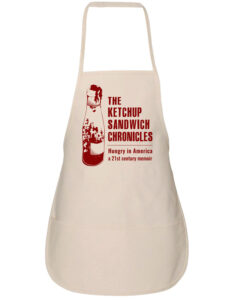
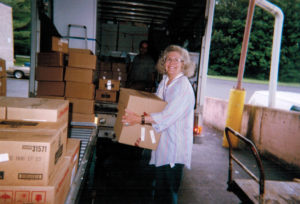
It’s easier than you think.
Step 1:
Choose the food pantry, homeless shelter, school, church, food bank, or soup kitchen to receive the food you collect.
Step 2:
Contact your recipient, and learn what items the hungry people need. Try to be specific. Can they only accept canned food items or can they use frozen and fresh foods? What about pet food?
If they need pet food or food for homeless people, for example, request those items (with specific food item suggestions) at your drive.
Step 3:
Decide how you want to collect the donated food.
The method I prefer is, of course, the one that worked for me several times. I recommend this method:
Gather some large empty grocery bags in good condition.
Attach a letter to each one saying something like:
Dear Neighbor:
“We are having a food drive in this neighborhood. Please fill this bag with food and set it out on your entryway on ………………………….. when it will be picked up between 00:00 and 00:00. Include am and pm to be more specific.
We need the following kinds of food:……………………..
Your donated food will be donated to ……………………………… Thank you for your generosity. If you have any questions, please call…………………………………. Signed…………………………………….”
Set the bags out at every address in the area you selected.
On the appointed date, return to the addresses and pick up the bags of food.
Step 4:
Deliver them to the selected food pantry, homeless shelter, school.
Step 5:
Pat yourself on your back. You did a great job!
My experience with this food drive method is that people respond positively because you give them bags, tell them exactly what food items you need, and return to pick up the food at a specific time on an exact date.
Thank you in advance for all you are doing to feed your neighbors.
Please post this article on your favorite social media network.
Share it with your friends.
Have a wonderful day!
Thurman Greco
www.hungerisnotadisease.com

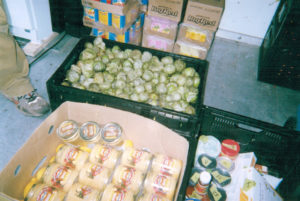
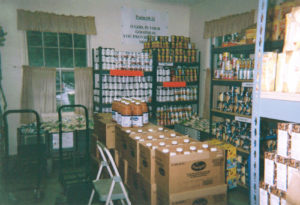
Take $1 – Leave $1
The young musician’s sign said it all:
TAKE $1
LEAVE $1
She sat on the sidewalk in front of Houst the other day, with her guitar box open. True to Woodstock tradition, she was singing for tips. Her sign, her posture, her music really resonated with me. I really feel that we are now fast approaching the point in our country where our residents are divided into two groups:
those who use pantries, soup kitchens
those who do not use pantries, soup kitchens
So, that puts us in the Take $1 – Leave $1 lifestyle.
Food pantries and soup kitchens, through the food distribution process work relentlessly to end hunger. Most people working in pantries or soup kitchens are volunteers who understand they offer hope and sustenance to a community of people living with and affected by hunger and, in some cases, homelessness.
Any amount you can spare will help make the pantry or soup kitchen you support a better place. Please send a donation today. Your gift will make a difference in the lives of people who have little and need a lot. Take $1 – Leave $1
Thank you in advance for your generosity.
Thurman Greco
Thank you for reading this blog. The story is true. The people are real.
Please refer this article to your preferred social media network.
Don’t forget to join the email list.
If Only….
Janet Poppendieck wrote a book entitled “Sweet Charity” about hunger in America. I found a quote of hers on the internet which inspired this post.
There’s all this food out there. Most people who know about hunger agree that there’s enough food for everyone. If we can stop the push back on this concept, and just feed the people, our lives (everyone’s lives in the whole country) will be very different. Imagine a world without hungry children and grandmothers.
Just for a moment, let’s think of all the ways we can benefit our many people and institutions by using this food.
For starters, think of pantries, soup kitchens, shelters, halfway houses as our tax dollars at work. Much of the emergency food effort is manned by volunteers diverting food headed for the landfill. For my $$$, this recycling effort works primarily to keep people from starving in the streets.
Now, consider the United States Department of Agriculture. As our country accumulates agricultural surpluses, instead of being embarrassed by the food, life will be better when the USDA proudly distributes the surplus to those in need. After all, surplus food is an uptown problem. It’s almost impossible to produce only exactly what we need. Farms just don’t work that way. Weather doesn’t always cooperate. Droughts don’t come by request. Floods have minds of their own. It’s better to produce too much than too little.
Businesses can and should ship excess food to pantries, soup kitchens, shelters, halfway houses. This is a responsible way to dispose of unwanted excess food products. When businesses donate to food banks, they avoid excessive dump fees and accrue tax savings. They reduce dumpster diving.
Universities, hospitals, caterers, restaurants, bakers, schools, can use the food banks to absorb leftovers. In metropolitan areas, the surplus food can go directly to soup kitchens, pantries. This is both a civic responsibility and community outreach.
Community colleges and Universities can recognize that there are impoverished students in their ranks. Pantries and soup kitchens on campus will make it easier for these students to stay in school.
Elementary, Middle, and High Schools will do well to recognize the poverty among the students and staff. Food pantries have a definite place in schools. Backpack programs belong in every school to ensure that students have enough food to eat over the weekends and holidays.
Churches, synagogues, and other religious institutions have opportunities to express concern for their fellow man as they include the poor at the table. Congregations refer to their feeding efforts as outreach. These necessary hunger prevention programs help feed people who otherwise would not have enough to eat and they give the congregations a local outlet for their charity and outreach programs.
Courts and penal institutions can use this concept by having people work service hours at pantries, soup kitchens, shelters, etc. to avoid or lessen incarceration.
Working at a pantry, soup kitchen or shelter provides service opportunities for people of all ages. The more people donate time, the less isolated these facilities become.
Diverting food from landfills offers communities an opportunity to improve our environment. Besides, why throw away good food?
Thank you for reading this blog.
Please refer this article to your preferred social media network.
Don’t forget to join the email list.
Thurman Greco
Do you work at a pantry? Do you shop at a pantry? Do you donate to a pantry? – Part 6
THERE’S NO WAY TO GET AROUND IT.
Efforts by pantries and soup kitchens to connect with hungry people make them inefficient.
A person may spend several hours on the phone just trying to find a pantry open on a specific day that s/he has transportation. And, calling ahead is important. Often the list a person is working with is inaccurate/out of date.
MOST IMPORTANT: PANTRY SHOPPERS NEED TO DETERMINE IN ADVANCE IF THEY’RE GOING TO BE ADMITTED TO THE PANTRY THEY’RE TRYING TO SHOP AT.
On the Food Bank front, no one can call the Food Bank of Northeastern New York or the Food Bank of the Hudson Valley disorganized or inefficient. The delivery systems, quality management, efficient consumer response, and sensitivity to the needs of the different agencies is above reproach.
How the employees at these 2 Food Banks can soldier on year after year is beyond me. I visit a Food Bank weekly.
I PLACE, ON AVERAGE, 2-3 ORDERS MONTHLY. A Reservoir Food Pantry volunteer is in the produce area of the food bank every Monday. The employees are always courteous, friendly, professional. Never has an order been botched. This is an amazing record when one considers there are only 80 employees (some part time) for 1028 agencies.
Inefficiencies are seen in the enormous labor involved in a food drive. And…the Food Banks thrive on food drives.
FOOD DRIVES TAKE AN ENORMOUS AMOUNT OF WORK ON THE PART OF MANY PEOPLE. An “army” is needed to advertise the food drive, determine and monitor the collection points, motivate people to give the food to the hungry and then take it to the collection points.
Once that happens, the food is assembled at a central point for sorting. Finally, after much handling, this food ends up on its way to a food pantry. Many people involved in a food drive project are volunteers.
Fortunately the HPNAP people in New York State instituted client choice guidelines in 2008 so volunteers no longer spend hours filling bags of food to be distributed to the shoppers.
When food bags were distributed, people would be given bags of food:
which they possibly could/could not cook based on their kitchen facilities.
and which they possibly could/could not eat based on their health issues.
With client choice, the food collected is much more efficiently distributed. ( Shoppers take home the food they can use.
ON THE SUPERMARKET FRONT, THERE ARE COMMUNITIES, NEIGHBORHOODS, AND RURAL AREAS THROUGHOUT OUR COUNTRY WITHOUT GROCERY STORES. We call these areas “food deserts”. Food pantries and soup kitchens replace disappearing supermarkets in inner-city and rural locations.
In a different system:
one where adequate food stamps are distributed to hungry people,
one where an adequate minimum wage meets the housing, transportation, and food needs of a household,
many people now lined up at food pantries and soup kitchens could shop at the store of their choice and purchase the food they want and can eat. There would be profit making businesses in these inner city and rural areas.
But, then, what would happen to all of us who spend our lives volunteering and working so that others might eat?
How could we continue to reduce landfill clutter? How could we reduce dumpster and composter costs?
How could we continue to recycle all the wonderful produce if there is no place for it to go?
FOOD PANTRIES AND SOUP KITCHENS FUNCTION SUCCESSFULLY BECAUSE COSTS ARE MINIMAL. Everything is donated:
Volunteer time
Recycled food which has been diverted from a landfill
Pantry Space.
Thank you for reading this blog/book.
Please refer this article to your preferred social media network.
Please send a comment.
Don’t forget to join the email list.
Peace and food for all.
Thurman Greco
Do you work at a pantry? Do you shop at a pantry? Do you donate to a pantry? Part 5
UNREACHABLE
“Hi Chris! How’s it going today? Are you busy or what in here? This place is jammed! ”
“Busy as always Thurman. We’ve got melons and a lot of tomatoes today. We’re out of the special HPNAP produce.”
“Listen Chris, it doesn’t matter. Prasida and Francine and I always find something wonderful and magical here every time we come to the Food Bank.”
Prasida and Francine make it their life’s work to get the best possible produce from Latham to Boiceville every Monday morning. These 2 women know food. Each week is a food quest for them.
THIS IS EXACTLY THE SAME SITUATION FOR THOSE SEEKING FOOD FROM A FOOD PANTRY.
And, of course, fresh produce and bakery goods are only part of the picture…Much of what happens is unplanned, haphazard, erratic. No one really complains. After all, we’re getting food, aren’t we? And, none of us has the authority, resources, responsibility, or ideas to improve the system.
IT BOILS DOWN TO THIS: WE AT RESERVOIR FOOD PANTRY:
GET WHAT WE GET
WHEN WE GET IT
HOW WE GET IT.
OUR CLIENTS GET WHAT THEY GET WHEN THEY CAN MAKE IT TO THE PANTRY.
WHEN THEY CAN NO LONGER MAKE IT TO THE PANTRY, WE GET IT DELIVERED TO THEM SOMEHOW.
LARGE DIFFERENCES EXIST IN CLIENT ACCESS TO PANTRIES AND SOUP KITCHENS. There are no soup kitchens in the Reservoir Food Pantry area. If a person out here needs to go to a soup kitchen, the best opportunity is to go to Woodstock on Mondays, Wednesdays, and Fridays at 4:30 pm. That’s when the Daily Bread Soup Kitchen in the back building of Christ Lutheran Church is open. Chances are good that if you don’t live in Woodstock and don’t have the wherewithal to put together a meal at your home (wherever and whatever that is), you aren’t going to have the wherewithal to make it over to Woodstock either.
AVAILABILITY HAS A LOT TO DO WITH ACCESS. Our pantry distributes food 3 days weekly but it’s only open on Mondays in Boiceville. If, for example, you live in West Shokan and have no transportation on Mondays, you aren’t going to make it to our pantry. Unfortunately, this also holds true in urban settings as well.
KINGSTON HAS MANY PANTRIES AND SOUP KITCHENS. There again, you need to be able to get to them when they’re open. Some people simply can’t make it over.
Take, for example, Motel 19, a shelter located at the intersection of Routes 28, 209, and 87 on the edge of Kingston. Without a bicycle or car, a person is looking at a long hike.
Imagine being a young mother with an infant or child trying to get to a grocery store, doctor’s office, pantry or soup kitchen. Imagine walking down a highway with this infant or child in your arms as cars travel faster than 45 miles per hour.
What if there is rain, freezing rain, or a snow storm?
Shoppers in rural areas routinely face transportation difficulties. People travel significant distances. Some walk, bicycle, take the bus, or hitch rides from friends and neighbors.
THE RULE IS THIS: THOSE MOST IN NEED HAVE THE LEAST ACCESS TO TRANSPORTATION.
Reservoir Food Pantry has been designated a mobile food pantry. We deliver food to half of our clients. One stop is a low rent complex for seniors. Another is an intergenerational low rent complex. The remainder of the stops are at individual residences – apartments, homes, rooms, whatever.
As challenging as it is for shoppers to get to the pantry, it’s equally difficult for the pantry volunteers to get to the Food Bank. At Reservoir Food Pantry, we’re fortunate to have dedicated volunteers and a reliable vehicle sold to me by Sawyer Motors at an excellent price. Remove those 2 factors, and the result is a mess.
SOME FOOD PANTRIES HAVE LIMITED FINANCIAL DONORS AND VOLUNTEERS. Some have transportation issues. They may lack produce, baked goods, and other foods necessary for a balanced diet.
The structure of our Food Bank/Food Pantry system is unable to ensure those in the greatest need will have access to food.
The Food Banks of Northeastern New York and the Hudson Valley are focused on developing innovative ways to get the food to the people. A designated truck is driven on a regular route to grocery stores, farms, food manufacturers, and other locations to pick up food and take it to the Food Bank. It is then sorted and made available to pantries.
THE FARM STANDS AT PEOPLES PLACE AND COMMUNITY IN KINGSTON ARE PRODUCTS OF THIS EFFORT.
The Food Bank of the Hudson Valley conducts daily mass food distributions throughout the area where a food bank driver in a semi delivers 12 pallets of food to a central point predetermined by a schedule. The food is then distributed to pantries, soup kitchens, shelters, individual households. Communities receiving these food distributions regularly include communities such as Lake Katrine, Gardiner, Kingston.
We have much needed food going to hungry people. I only wish more of it were going to the more rural locations.
Now that I’m writing a wish list, I wish more pantries would open on evenings and weekends. This is difficult to do, I know. Reservoir Food Pantry is not yet open weekends.
I also wish pantries could give up some of the identification requirements.
JUST FEED THE PEOPLE, YOU KNOW?
Thank you for reading this blog/book.
Please refer this article to your preferred social media network.
Please leave a comment.
Don’t forget to join the email list.
Peace and food for all.
Thurman Greco
Motel 19 and The Good Neighbor Food Pantry
htttp://plus.google.com/114181808678031757824/photos?gl=us&hl=en
“When we talk cooking and eating, we are talking love, since the entire history of how a family loves – where and how they learned to love can be told in most kitchens.” – Marion Roach Smith
EVERYONE COMING TO A PANTRY TRAVELS DOWN A PATH. For many, this journey is a real load lightener. As the finances erode, the housing goes. And, of course, when the house or apartment goes, most of what was in it, goes too.
Furniture, kitchen items, toys, clothes, tools, garden implements, books, photos, souvenirs – by the timne a person or family gets to Motel 19, things have been slimmed down to a few clothes, a blanket or two, a hot plate, or maybe an electric skillet. Maybe a toy or two if there are children.
ABOUT 40 HOUSEHOLDS ARE LUCKY ENOUGH TO BE IN MOTEL 19. Half of these households are composed of individuals. The other half are families. For the families living in Motel 19, the children are usually eligible for the school breakfast and/or lunch program. But, that doesn’t give them enough to eat at home. And, there’s no lunch program for the adults.
So…it’s off to the pantry.
PANTRIES ARE IMPORTANT FOR PROVIDING FOOD. If someone in a household can get food, bring it back to whatever and wherever is home at the time, prepare it, and serve it, a feeling that some part of the family’s routine has returned to normal. This act of preparing and serving food can be very grounding to everyone in the household.
Soup kitchens are wonderful places for people to eat but can’t substitute for pantries. Pantries are cheaper to maintain, for one thing. A soup kitchen staff, needed to prepare the food, serve it, and clean up after each meal, is more expensive than a pantry staff. Soup kitchens purchase napkins, cutlery, etc. Pantries are generally composed of volunteers. Soup kitchens have paid staff. Soup kitchens are absolutely essential for those who have no kitchens or roof at all.
Because of the cost of gas, several families at Motel 19 pile in a car and come over on pantry day. Or, an individual hitchhikes.
THE PEOPLE LIVING IN MOTEL 19 ARE, ON ONE LEVEL, VERY FORTUNATE because a minimum wage worker can easily work more than a week just to pay the rent on a tiny apartment or room.
Not everyone in a low-income household can get into Motel 19. Low-income wage earners are forced to choose between rent, gas, health care, and groceries. Living in this situation means living with hunger on a daily basis.
Motel 19 is a real lifesaver for many people sent over from the Department of Social Services when they’re homeless. Individuals, couples, families. Each household, whether one person or a family, gets one room at Motel 19. The room is furnished with a single bed, a bathroom, a small refrigerator, a microwave, and a TV. The place is a functioning motel so the residents also get clean towels and sheets weekly.
At one time, Motel 19 had a restaurant on the premises but it’s been closed awhile. Word on the street is that a pizza restaurant is coming soon. There’s a car dealership in the parking area outside the front of Motel 19. Shamrock Sales has about five or six used vehicles for sale. No one seems interested in them.
BAD BACK BOB MADE MOTEL 19 FAMOUS FOR US because, when he began coming to our pantry, he spoke about his neighbors and also brought some of them over to shop. This was a real accomplishment because these people, though very fortunate to be living in Motel 19, are trapped without transportation. Motel 19 is located at the intersection of Routes 28, 209, and 87 on the edge of Kingston. Without a bicycle or car, any person trying to get somewhere is looking for a long hike.
Imagine being a young mother with an infant or child trying to get to a grocery store, doctor, or even a soup kitchen for that matter. IMAGINE WALKING DOWN THE HIGHWAY WHERE CARS ARE TRAVELLING faster than 45 miles per hour with this infant or child in your arms. Add rain, freezing rain, or a snow storm.
Bob always thought about his neighbors when he volunteered. He reminded us that not everyone can deal with the bureaucracy of a pantry and he always took some of his three-day allotment of food home, cooked it in his crock pot, and shared it with these special neighbors.
And, Bob is right. On the one hand, our pantry has very little bureaucracy because we never ask for any ID or documentation. We ask only that the person give us his/her name, the number of persons in the household, and the breakdown of seniors, adults, and children. We need those statistics for the monthly Hunger Prevention Nutrition Assistance Program report. We’re given our line of credit for food based on these numbers. The more households, seniors, adults, and children, the more food for our pantry.
Even though the pantry has very few documentation requirements, we more than made up for the paperwork with our building guidelines. Everyone, including volunteers, was only allowed in the building during certain times…no exceptions.
When it was time for the shoppers to be allowed in the building, they were invited in five people at a time. The shoppers were allowed to stand in a single file line in the hallway. There were only three chairs available in the hallway and there were typically over fifty people waiting in line. No one was allowed to touch the walls. The wait in the hallway was often over an hour.
PEOPLE CAME INTO THE PANTRY ROOM IN GROUPS OF FOUR. They went around the room in a single file and were in the room no more than three or four minutes. They shopped for a three-day-supply of food which lasted for seven days.
THIS POST SENDS OUT A SPECIAL REQUEST: Motel 19 residents really need pantry services. Walking down Route 28 to get into Kingston is challenging for some and scary for others. Life would be beautiful if some kind souls can open a Pocket Pantry. Or maybe some other pantry in Kingston can send over food every week. Or maybe some mobile food pantry can include Motel 19 in the regular route. Contact me if you have questions.
Thank you for reading this blog/book.
Please share this article with your preferred social network.
Please send a comment.
Peace and food for all.
Thurman Greco


